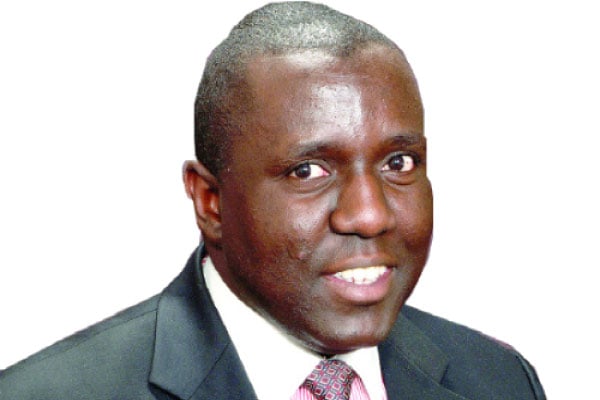Of climate change impact on economy

Author: Mr Karoli Ssemogerere is an Attorney-at-Law and an Advocate.
What you need to know:
- The Catholic White Fathers summed up this in a popular offertory hymn, “Ebiraabo tuleeta”. Imaginative they were, they prayed to God to continue harmonising the sun and the rain to support rich yields in the fields.
As we sailed across Lake Victoria in our canoe picking up a big coffee haul, I looked up at the blue skies. Sun is good, rain is better. The Catholic White Fathers summed up this in a popular offertory hymn, “Ebiraabo tuleeta”. Imaginative they were, they prayed to God to continue harmonising the sun and the rain to support rich yields in the fields.
For all my school going years, Kalangala and Gulu and less Kampala were competing ovals in the Geography of Uganda, a graveyard examination for A-Level students. Different variations of the multiple choice asked one or more versions of a similar question. Which district had the highest total rainfall, which district had the highest rainfall frequency or which district had the highest frequency of thunderstorms?
On the Cable News Network, a soft platform for the US foreign policy establishment, the weatherman always indicated an image depicting thunderstorms in Kampala. Up until climate change arrived, Kampala had the highest frequency of thunderstorms, 160 days a year, a situation night robbers took advantage of. In fact, each time the government flexes its muscle on what it calls – unregistered businesses, the true fact is hawkers are an eye sore and a symptom of open unemployment, the communities surrounding Kampala record a surge in overnight break-ins, theft of livestock and food for those who grow food. Three years ago, there were a few highly televised replays of scenes to catch these thieves.
In Masaka, in Kisaabwa, the home of the late Ben Kiwanuka, it was a porter during the day who was sniffed out by a police sniffer dog after solar panels went missing. In Buikwe, long associated with a legacy of animist tendencies, “the spirits” seized the thief with a banana cluster on the head. Recently, this column reported that in response to high fuel prices, the thermal plant in Kalangala District opted to “load shed” from midnight to 6am, a situation that soared petty theft and overnight break-ins. I listened to a harrowing tale of one of our most upright young residents. Paul Muwanguzi describes not one but three break-ins that left his chapati making business gone for good.
Theft at night is by no means an easy task. It requires a lot of blind courage. If the mission fails, the risks are very high. Boda-boda drivers who have shunned the Apps can miraculously transform from innocent drivers to knife wielding ransom attackers. The customary rains used to make their work much easier. However, for three long months, rains seem to be something of the past.
Kalangala was always the correct answer if you asked how many times it rained a year, rainfall was recorded on 220 days of 365 days a year. Gulu and the rest of the upper Nile all the way into Southern Sudan owned the other answer, very high rainfall totals, the reason why big agriculture in peacetime is migrating northwards. Thirsty perennial crops, timbers need this rainfall to sustain bulk. It was always a mystery why mango trees in Gulu and Juba are three times the size of mango trees in other parts of the country.
Once a former Minister of Agriculture Victoria Sekitoleko in a particularly dry spell was asked about famine and she brushed off an inquisitive pressman with a matter of factly statement, that the villagers should eat mangoes which were in abundance.
Climate change has affected annual and perennial crops in equal measure. In spite of a very strong maize crop this year, Tanzania and Uganda have correctly opted not to export maize to Kenya where maize prices had skyrocketed from Kshs100 to Kshs200 a 10 kg bag.
Food inflation has migrated down the food chain. Many millers domestically are experimenting with adding cassava and maize flour to wheat to make bread. The images of famished Ugandans in Karamoja are a doze of unsavory news our leaders were not expecting. Karamoja is very vulnerable. Its riches in the ground have cordoned off traditional grazing grounds. The prior forays into neighbouring districts at the moment’s notice are also something of the past. Food rich Kapchorwa is in the rear view of Karamoja.
The images of famished Ugandans at a time when the public debate was over Uganda’s attainment of “middle income status” were a reminder of unfulfilled dreams and promises. Prosperity for all, Entandikwa, Bonna Baggagawale and possibly now the parish development model. Without fully addressing the impact of climate change on the economy is likely to escalate into a high cost, high price, low-income situation which in turn breeds political unrest. Already, Uganda’s population is likely to hit 50 million people very soon. Uganda’s population has quadrupled in just 40 years and the population curve is still steep.
Mr Ssemogerere is an Attorney-At-Law and an Advocate. [email protected]


